Coulomb corrections
--> Draft note on Coulomb correction (last updated: Feb. 28, 2007)
03/20/2009
Coulomb corrections and A-dependence of R:
- Reproduced the same results as Dave for Copper --> clear A-dependence of R after coulomb corrections are applied
- Checked other nuclei: Helium-4, carbon and gold.
- Only Copper-Iron shows this strong A-dependence in R.
- Even Gold looks flat after coulomb corrections but it is pretty clear the strong ε' dependence of the coulomb distortion.
--> Preliminary conclusion: Copper-Iron data seem odd.
Copper-Iron (left plot: no CC, right plot: CC)
Helium-4 (left plot: no CC, right plot: CC)
Carbon (left plot: no CC, right plot: CC)
Gold (left plot: no CC, right plot: CC)
04/05/2007
- Had ξ-model turned on in my coulomb correction code.
- Coulomb corrections on Aji's new data with ξ-model turn off: now using xem-model.
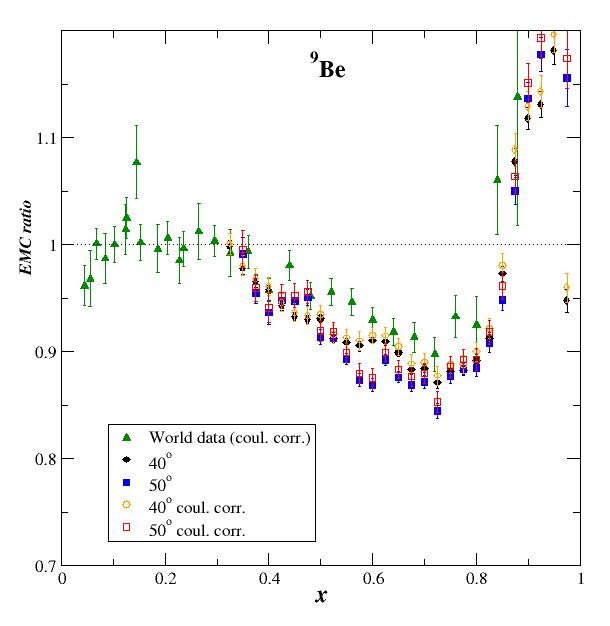



- xi-model on Gold:
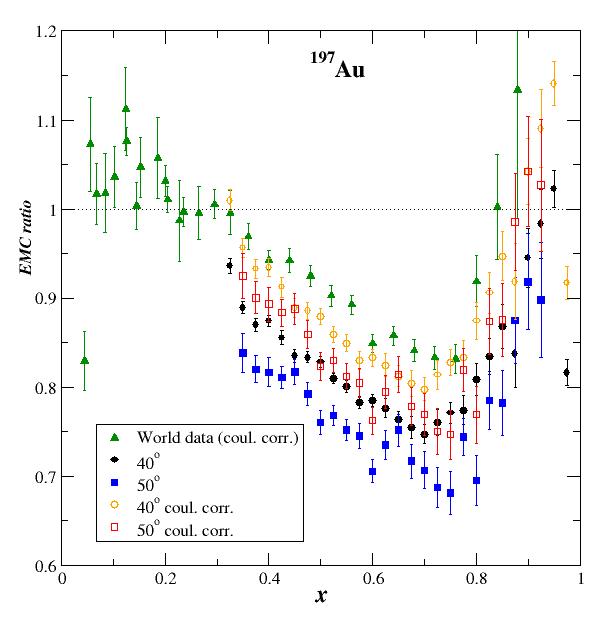
03/13/2007
- Following John's suggestion, I looked at Coulomb corrections versus x for each target in order to extrapolate the coulomb correction to nuclear matter. But Coulomb corrections are Q2-dependent as shown on the following figure (most obvious on 56Fe which has a great coverage in x and Q2). For exemple, the low 56Fe data have a Q2 around 100.
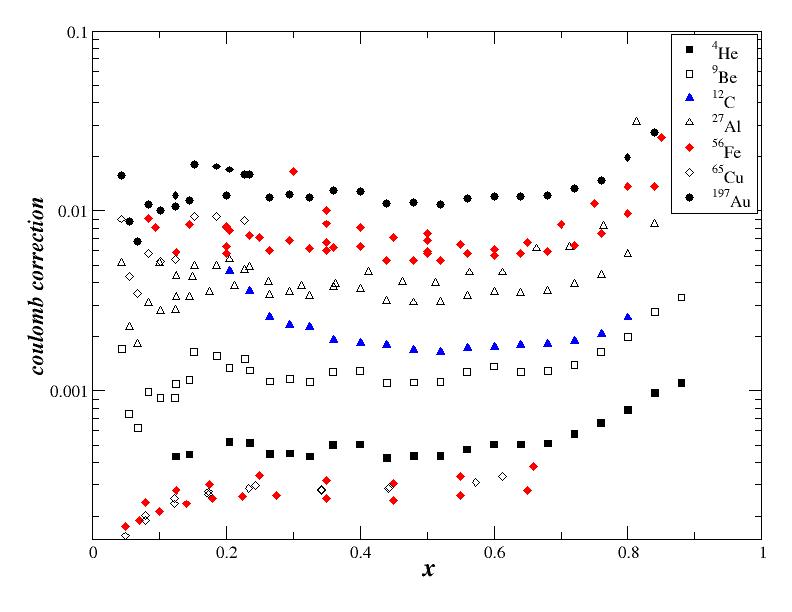
- We can extract the coulomb correction on the nuclear matter in function of x using only data in the same Q2-range. The trend looks exponential so will give an infinite correction. I have to look at it more carefully.
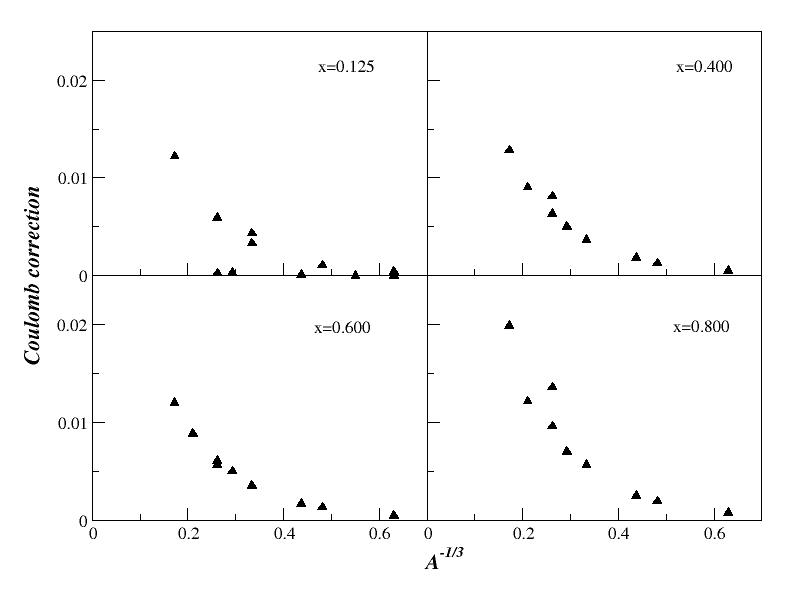
02/28/2007
- Applied Coulomb to world data as clarified by A. Aste:
E --> E+V and Ep --> Ep+V in both Mott and Spectral function, then apply incoming focusing factor.
or
E --> E+V and Ep --> Ep+V only in Spectral function.



- Looked at Q2, A and ρ-dependence at fixed x after applying coulomb correction
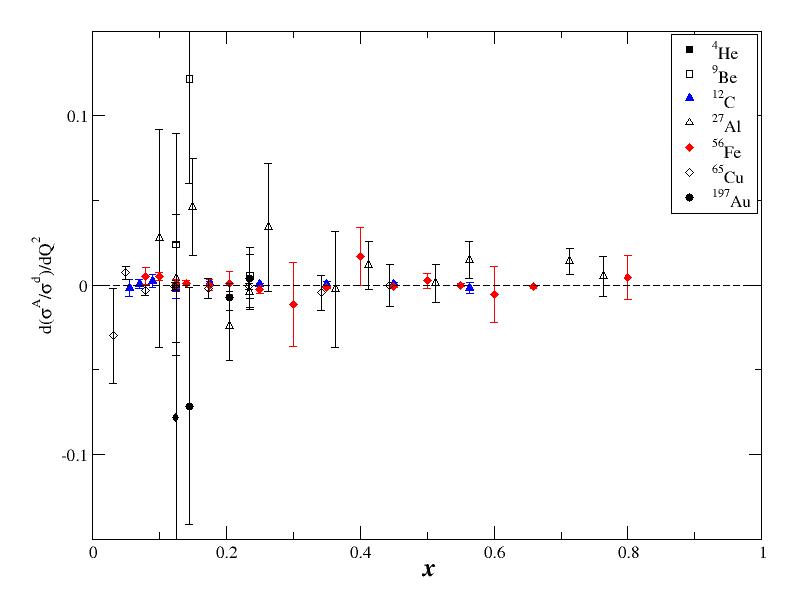

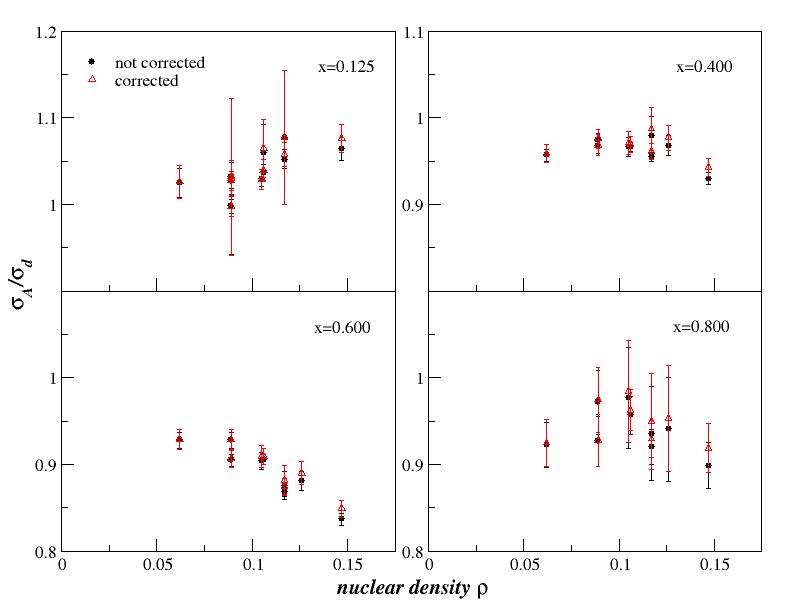
10/13/2006
- Using the Coulomb potential estimated from comparison to fit values (Gueye et al, PRC 60 (1999) 044308) --> Vs = C_ASTE * V0 with C_ASTE=0.75
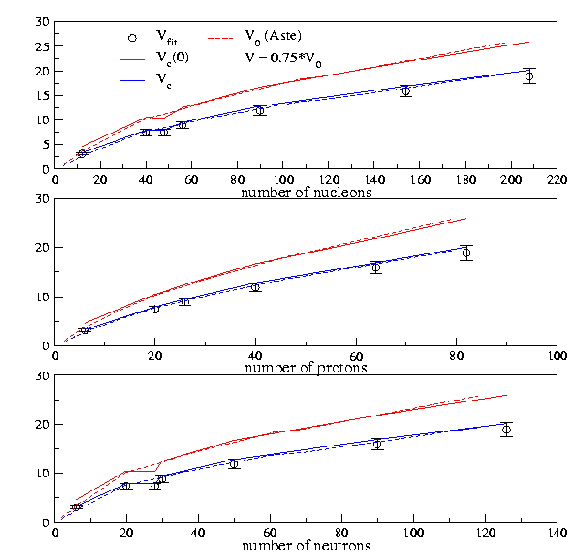
- Applied the change q --> qeff only on structure functions.
- Implemented xem_model in Coulomb correction code. Used only the DIS part of the cross section. (neglecting QE part has no effect)
- Comparison of the coulomb corrections when using the simple model (or ξ-model) and the xem-model: significant differences can be seen at low x.



09/28/2006
- Convert Dave's kumac in a fortran code.
- Use now the method describe in Aste & Jourdan (Europhys. Lett. 67 (2004) 753):
1) use the Coulomb potential estimated at the surface of the nucleus: Vs = 2/3 * V0.
(V0 is the Coulomb potential at the center of the nucleus: 3α(Z-1)/2R0 with R0 = (1.1 A1/3 + 0.86 A-1/3).
2) the Mott cross section stays unchanged under EMA.
3) the structure function is evaluated remplacing E by E+Vs and E' by E'+Vs.
4) the resulting cross section is then multiplied by ((E+V0)(E'+V0)/(E+Vs)(E'+Vs))**2.

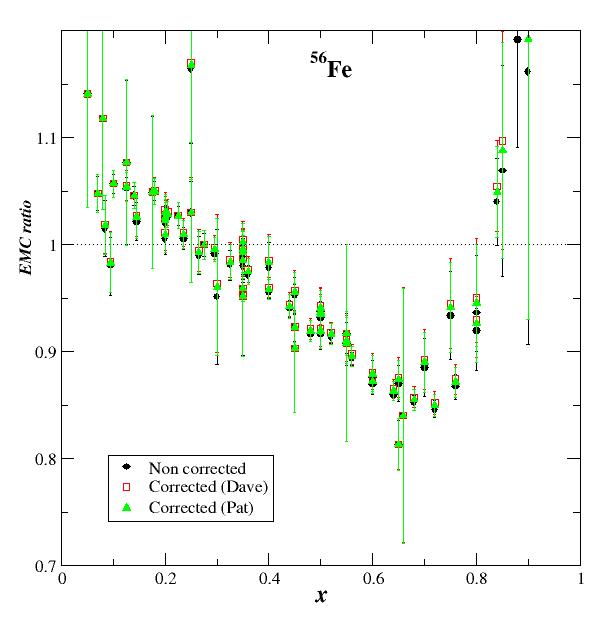
Next plot: it is 197Au (not 208Pb).

- Now implementing XEM cross section model in my code.
Patricia Solvignon
Last modified: Sat Mar 21 17:39:25 EDT 2009



















